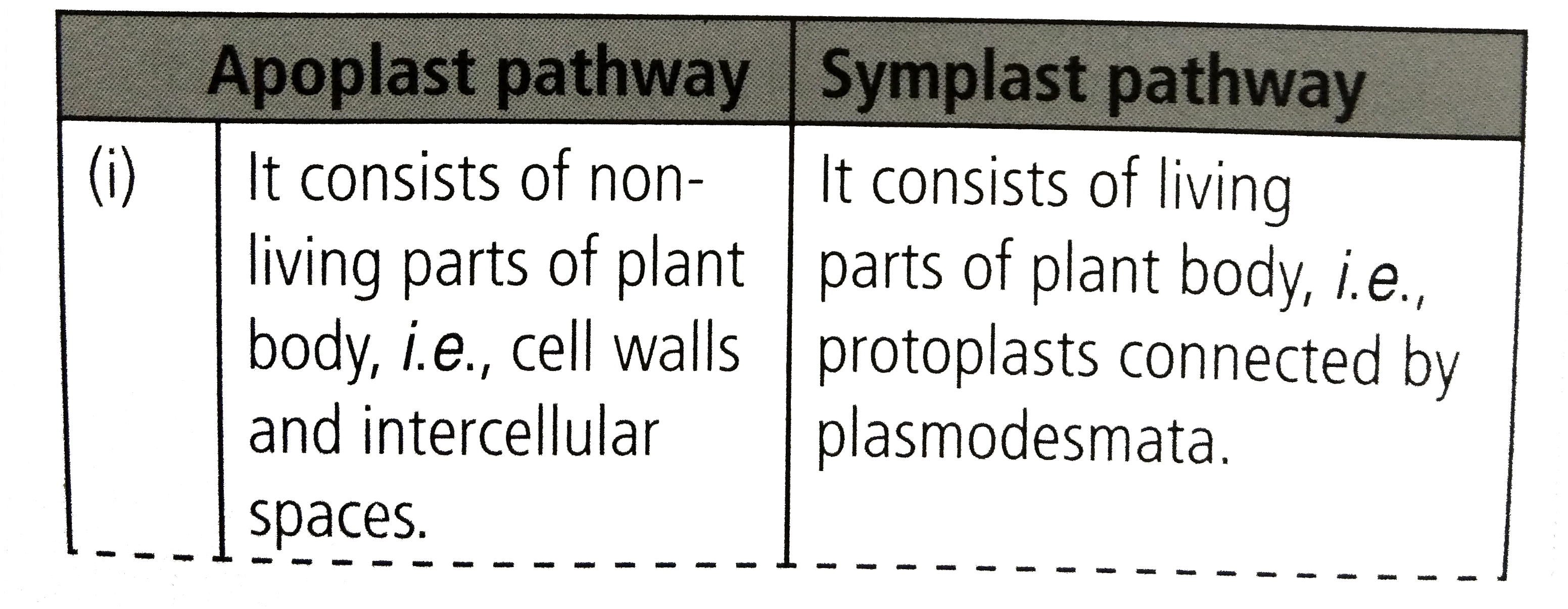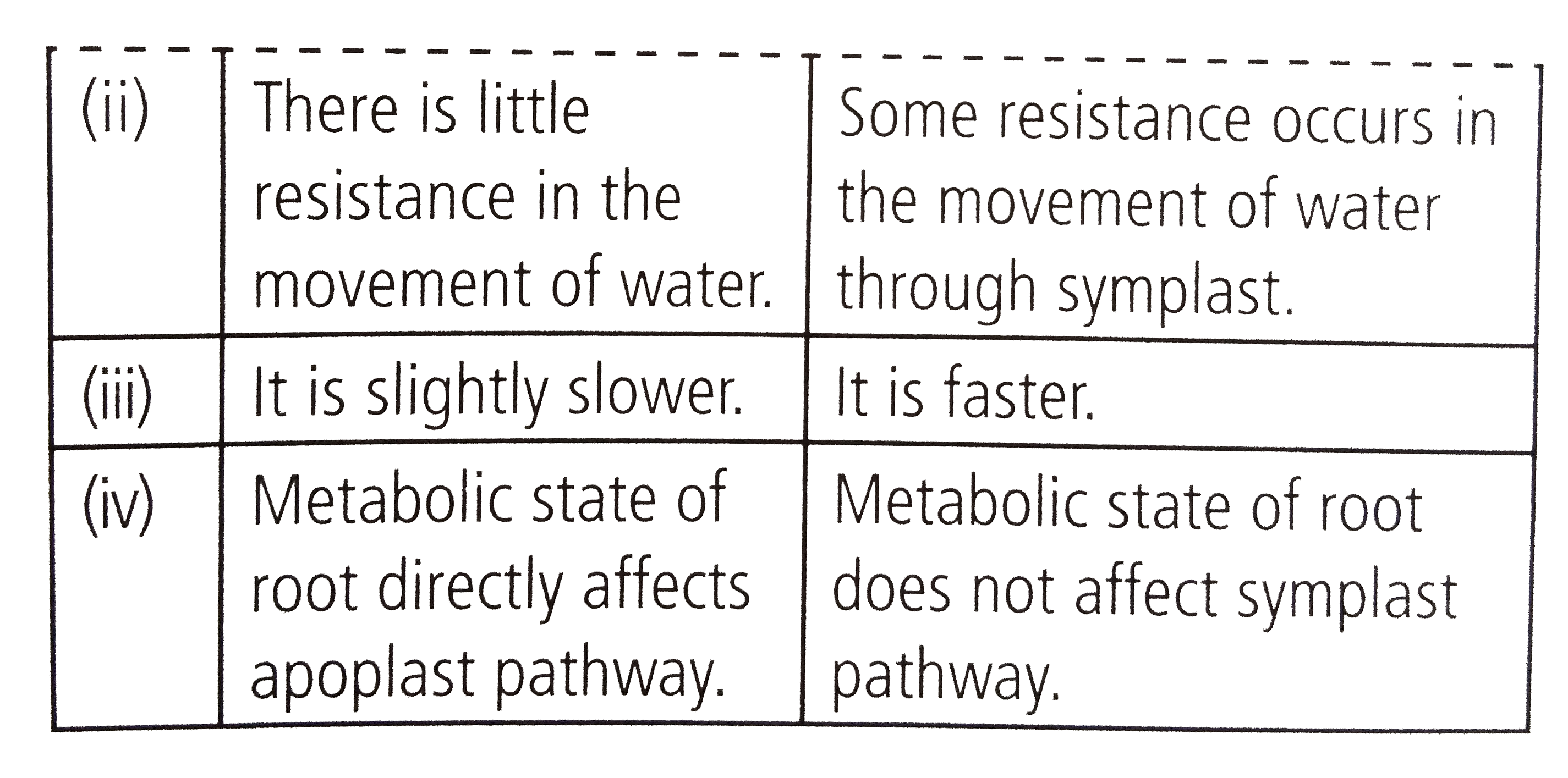Could lons reach the xylem entirely by means of the apoplast pathway?
Step-by-Step Solution:
1. Understanding Pathways of Water and Ion Absorption:
- In plants, water and ions are absorbed from the soil through the roots and transported to the xylem. There are two main pathways for this transport: the apoplast pathway and the symplast pathway.
2. Defining the Apoplast Pathway:
- The apoplast pathway involves the movement of water and ions through the cell walls and the spaces between cells. This pathway is characterized by low resistance to the flow of water.
3. Defining the Symplast Pathway:
- The symplast pathway requires water and ions to move through the cytoplasm of the cells. This pathway involves crossing the cell membranes, which can create more resistance compared to the apoplast pathway.
4. Role of the Casparian Strip:
- The Casparian strip is a band of cell wall material in the endodermis that is impregnated with suberin, making it water impermeable. This structure acts as a barrier that prevents the apoplast pathway from continuing into the xylem.
5. Limitations of the Apoplast Pathway:
- While the apoplast pathway is effective in transporting water and ions up to the Casparian strip, it cannot transport them beyond this point. Once the water and ions reach the Casparian strip, they must enter the cytoplasm of the endodermal cells.
6. Conclusion:
- Therefore, ions cannot reach the xylem entirely by means of the apoplast pathway alone. They must also utilize the symplast pathway after crossing the Casparian strip to enter the xylem.
Final Answer:
No, ions cannot reach the xylem entirely by means of the apoplast pathway due to the presence of the Casparian strip, which requires them to enter the symplast pathway to continue their journey to the xylem.
---
- In plants, water and ions are absorbed from the soil through the roots and transported to the xylem. There are two main pathways for this transport: the apoplast pathway and the symplast pathway.
- The apoplast pathway involves the movement of water and ions through the cell walls and the spaces between cells. This pathway is characterized by low resistance to the flow of water.
- The symplast pathway requires water and ions to move through the cytoplasm of the cells. This pathway involves crossing the cell membranes, which can create more resistance compared to the apoplast pathway.
- The Casparian strip is a band of cell wall material in the endodermis that is impregnated with suberin, making it water impermeable. This structure acts as a barrier that prevents the apoplast pathway from continuing into the xylem.
- While the apoplast pathway is effective in transporting water and ions up to the Casparian strip, it cannot transport them beyond this point. Once the water and ions reach the Casparian strip, they must enter the cytoplasm of the endodermal cells.
- Therefore, ions cannot reach the xylem entirely by means of the apoplast pathway alone. They must also utilize the symplast pathway after crossing the Casparian strip to enter the xylem.
No, ions cannot reach the xylem entirely by means of the apoplast pathway due to the presence of the Casparian strip, which requires them to enter the symplast pathway to continue their journey to the xylem.
Topper's Solved these Questions
- BOOK - ICSECHAPTER - TRANSPORT IN PLANTS EXERCISE - NCERT EXERCISE WITH ANSWER22videos
TRANSPORT IN PLANTS
- BOOK - ICSECHAPTER - TRANSPORT IN PLANTS EXERCISE - NCERT EXERCISE WITH ANSWER (DIFFERNTIATE BETWEEN )16videos
TRANSPORT IN PLANTS
- BOOK - ICSECHAPTER - TRANSPORT IN PLANTS EXERCISE - TEST YOUR PROGRESS (SHORT/LONG ANSWER TYPE QUESTIONS)34videos
TRANSPORT IN PLANTS
- BOOK - ICSECHAPTER - THE LIVING WORLD EXERCISE - Ncert Exercises (Differentiate Between )4videos
THE LIVING WORLD
Similar Questions
Knowledge Check
- Question 1 - Select One
Following are the differences between apoplast pathway and symplast pathway.

 A(iii)onlyB(i)and(iii)onlyC(iii)and(iv)onlyD(ii)and(iii)only
A(iii)onlyB(i)and(iii)onlyC(iii)and(iv)onlyD(ii)and(iii)only - Question 2 - Select One
In addition to the normal process of oxidation of carbohydrates through glycolysis and Krebs' cycle, there is another process by which plants could oxidise carbohydrates to obtain energy. In this process, hexose sugars undergo oxidative degradation through 5-C sugar intermediates and hence it is known as pentose phosphate pathway (P P P). Which of the following statements is not true with regard to P P P?
AIt is an alternative to glycolysis and also acts as a safety value or shunt to glycolysis and also acts as aBIt is common in plants and occurs in certain specialised tissues of animal body, e.g., liver, adipose tissue, testes, ovary, adrenal cortex, lactating mammary gland, eye lens and cornea.CIt occurs only in cytoplasm but not in any cell organelle.DIt is also called as hexose monophosphate shunt (HMP pathway).
Select incorrect for apoplastic system of pathways.
View SolutionThe entire reactions of C4 pathway take place in
View SolutionMinerals absorbed by the roots travel up the xylem. How do they reach the parts where they are needed most? Do all the parts of the plant get the same amount of minerals?
View SolutionMinerals absorbed by the roots travel up the xylem. How do they reach the parts where they are needed most ? Do all the parts of the plant get the same amount of the minerals ?
View SolutionDefine :
(a) Membrane permeability.
(b) Apoplastic pathway.View SolutionExarch arrangement of primary xylem means
View Solution

